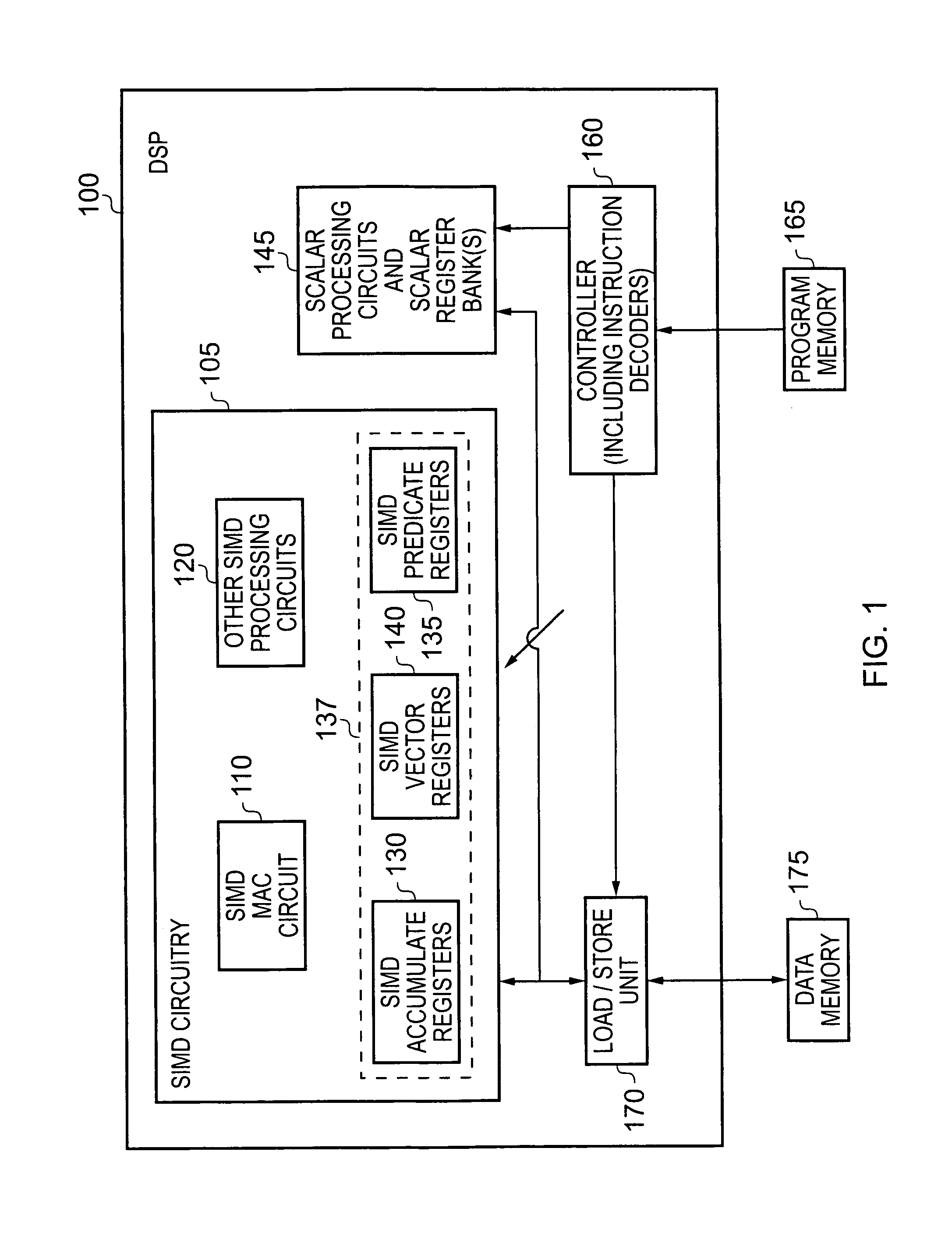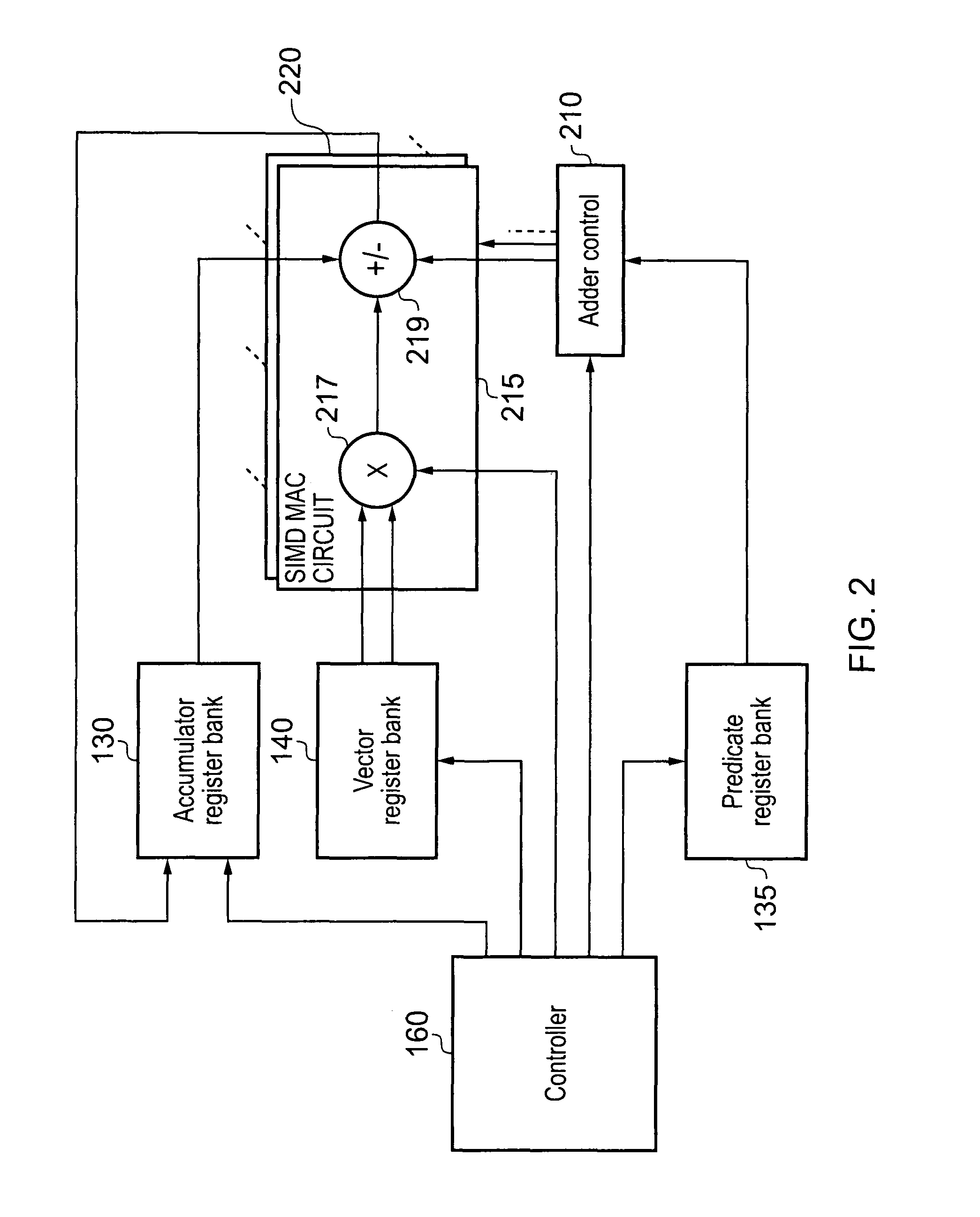Apparatus and method for performing multiply-accumulate operations
a technology of multiply accumulation and apparatus, applied in the field of apparatus and method for performing multiply accumulation (mac) operations, can solve the problems of requiring a lot of memory space, unable to construct sequences for a particular, and lack of flexibility in the approach
- Summary
- Abstract
- Description
- Claims
- Application Information
AI Technical Summary
Benefits of technology
Problems solved by technology
Method used
Image
Examples
Embodiment Construction
[0049]In accordance with embodiments of the present invention, a predicated multiply-accumulate (predicated MAC) instruction is provided. For a scalar version of the instruction intended to be executed on scalar processing circuitry, the instruction takes as input operands a first input data element, a second input data element and a predicate value used to control whether a multiply-add or a multiply-subtract operation is performed when the instruction is executed. Optionally, a predicated MAC instruction may also take as an input operand an initial multiply-accumulate data element (also referred to herein as an initial accumulate data element).
[0050]However, for the purposes of describing one embodiment of the present invention, it will be assumed that the predicated multiply-accumulate instruction is intended to be executed within SIMD circuitry in order to perform a plurality of multiply-accumulate operations in parallel. In such embodiments, the predicated MAC instruction takes...
PUM
 Login to View More
Login to View More Abstract
Description
Claims
Application Information
 Login to View More
Login to View More - R&D
- Intellectual Property
- Life Sciences
- Materials
- Tech Scout
- Unparalleled Data Quality
- Higher Quality Content
- 60% Fewer Hallucinations
Browse by: Latest US Patents, China's latest patents, Technical Efficacy Thesaurus, Application Domain, Technology Topic, Popular Technical Reports.
© 2025 PatSnap. All rights reserved.Legal|Privacy policy|Modern Slavery Act Transparency Statement|Sitemap|About US| Contact US: help@patsnap.com



